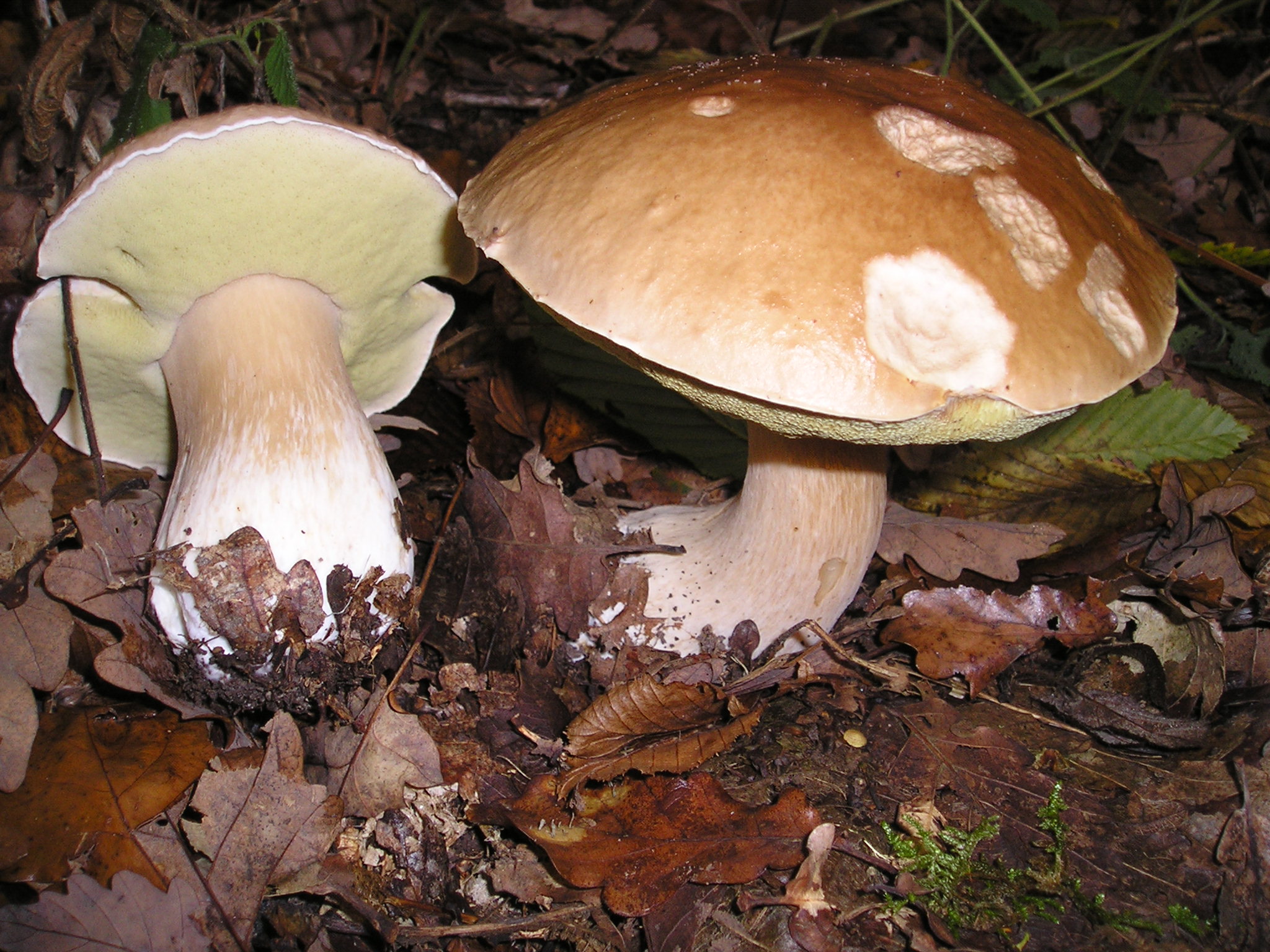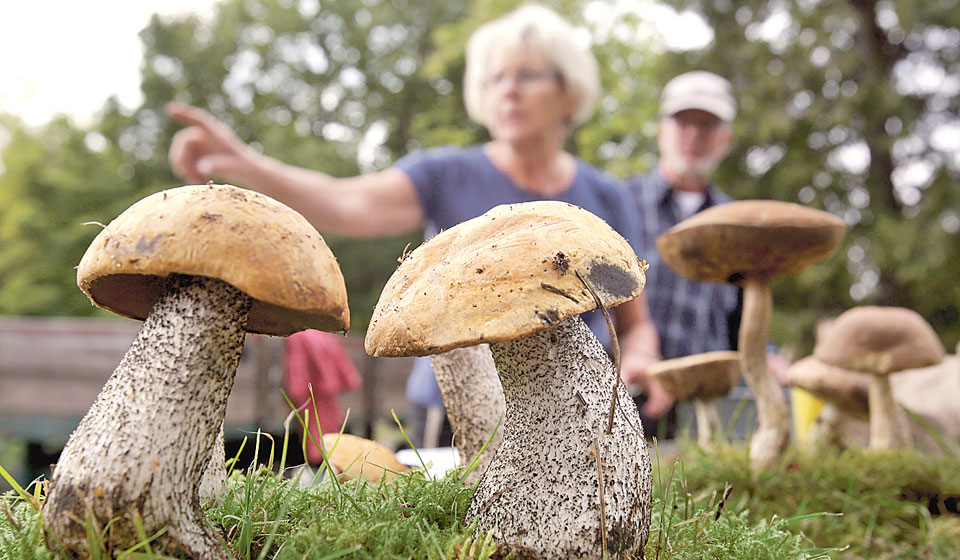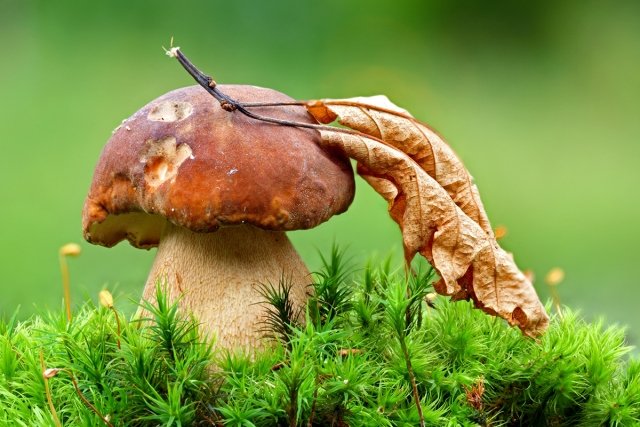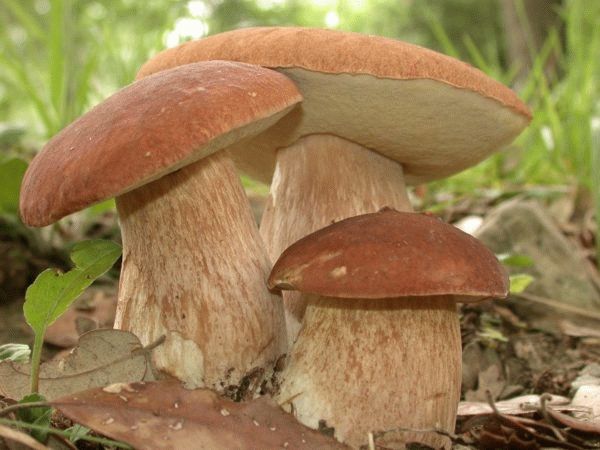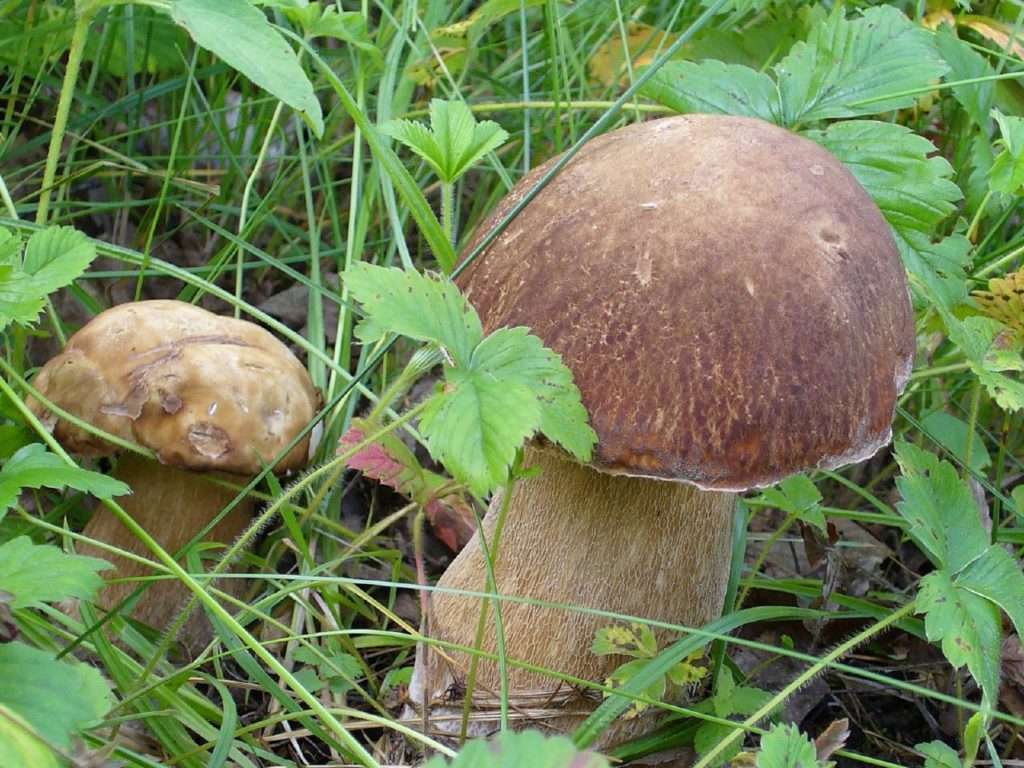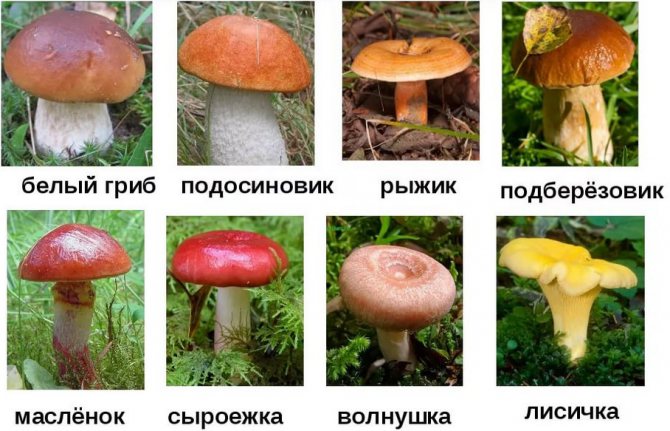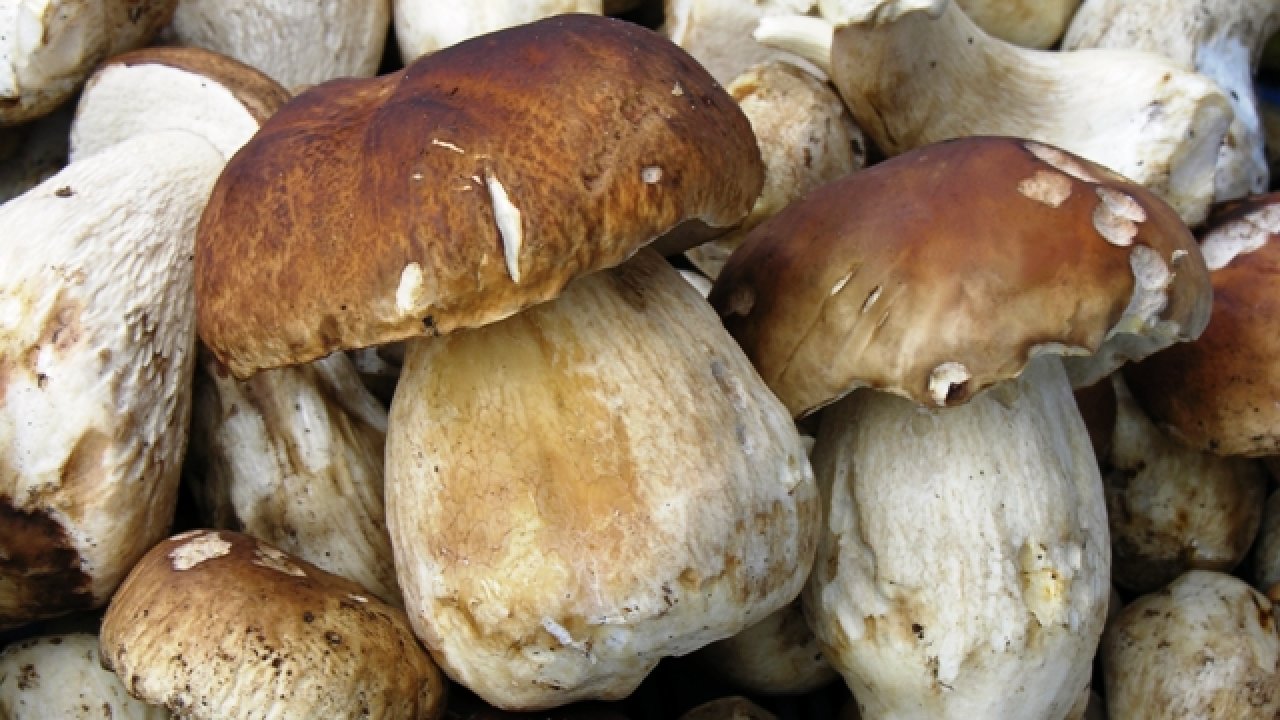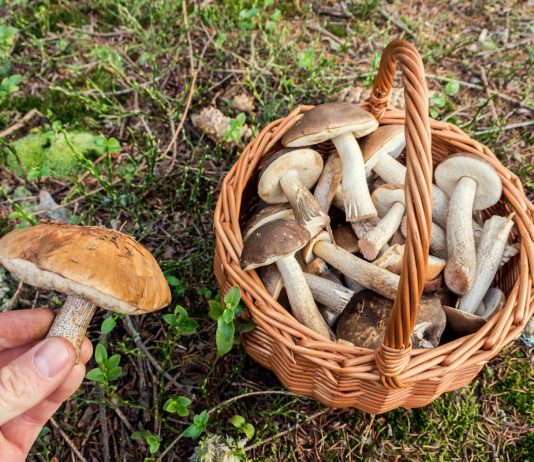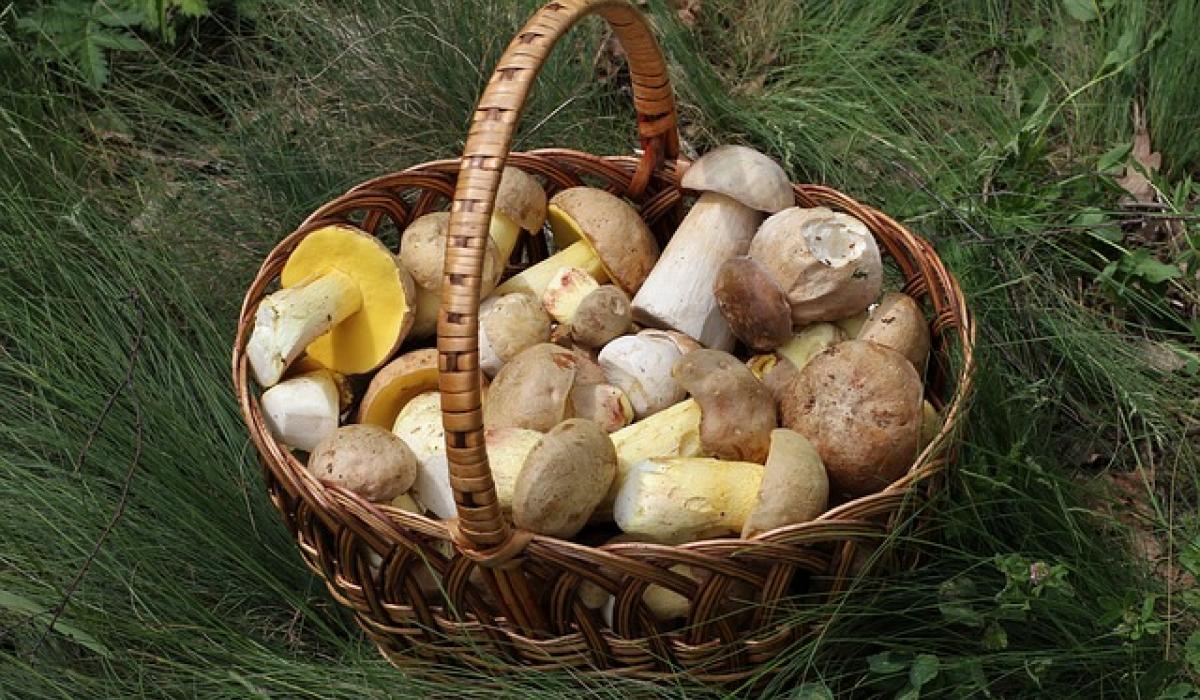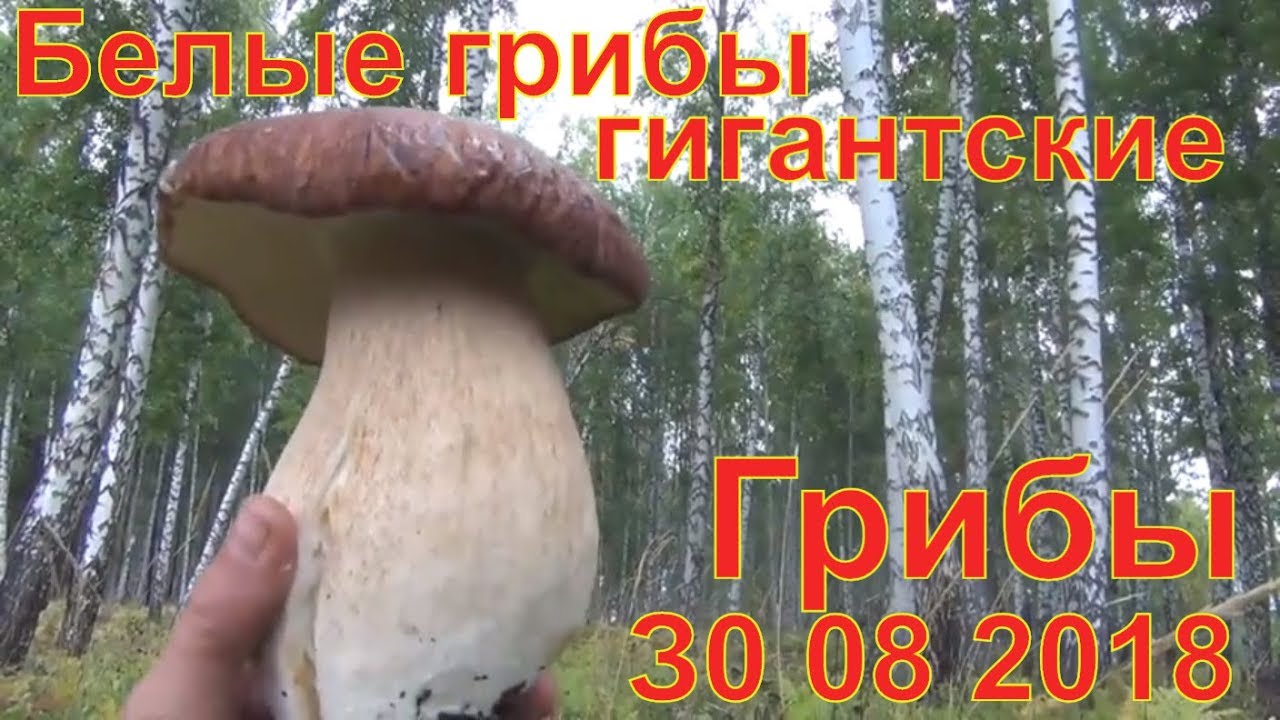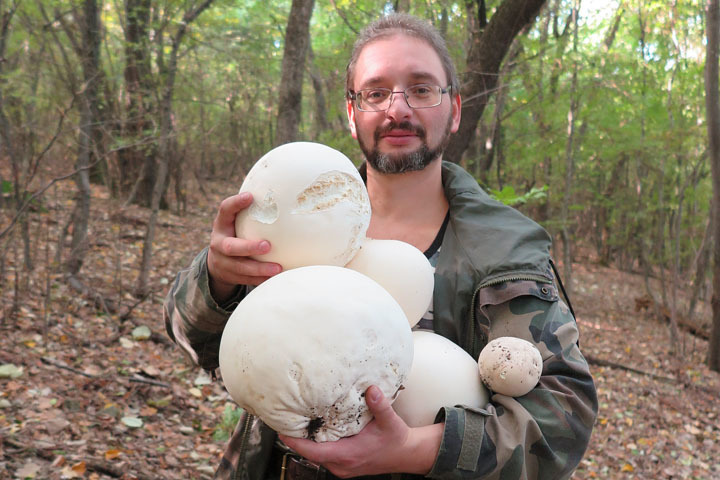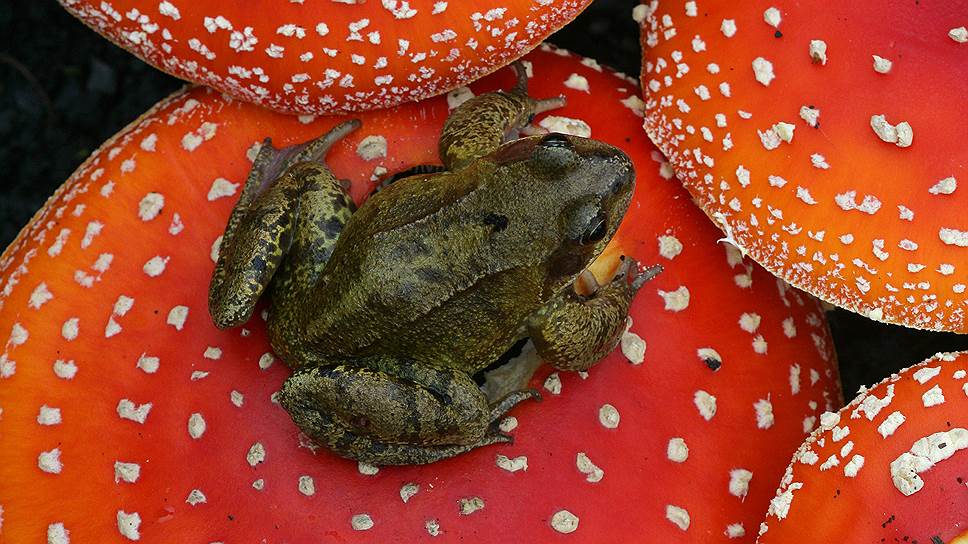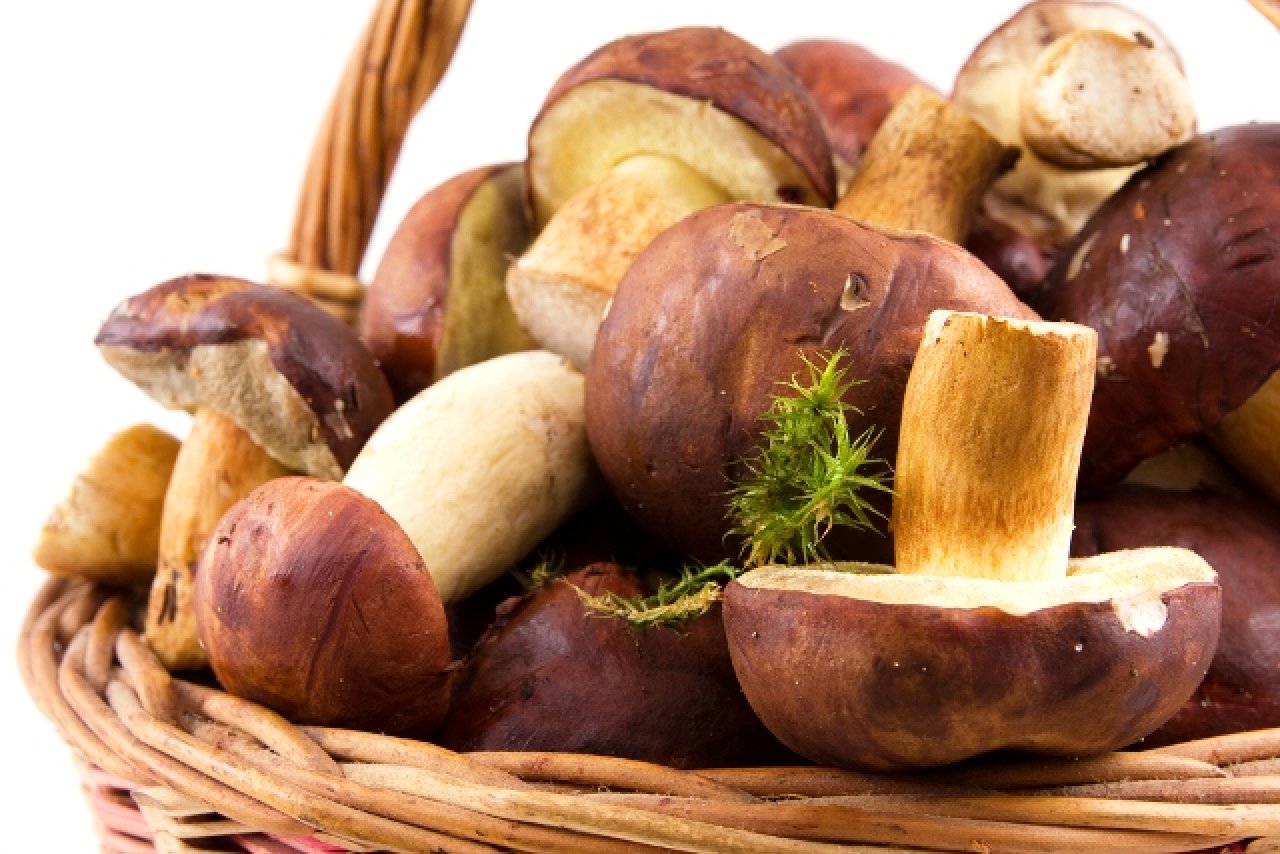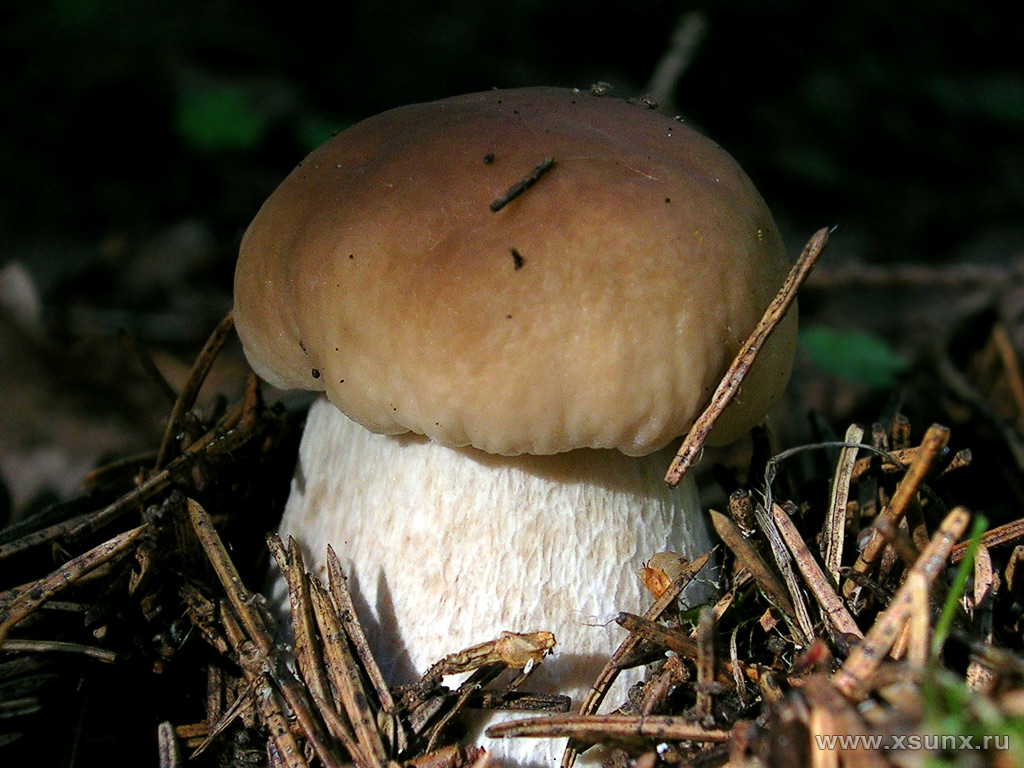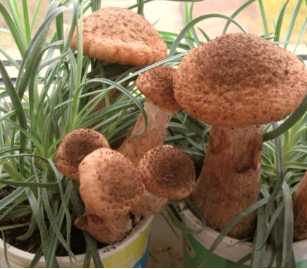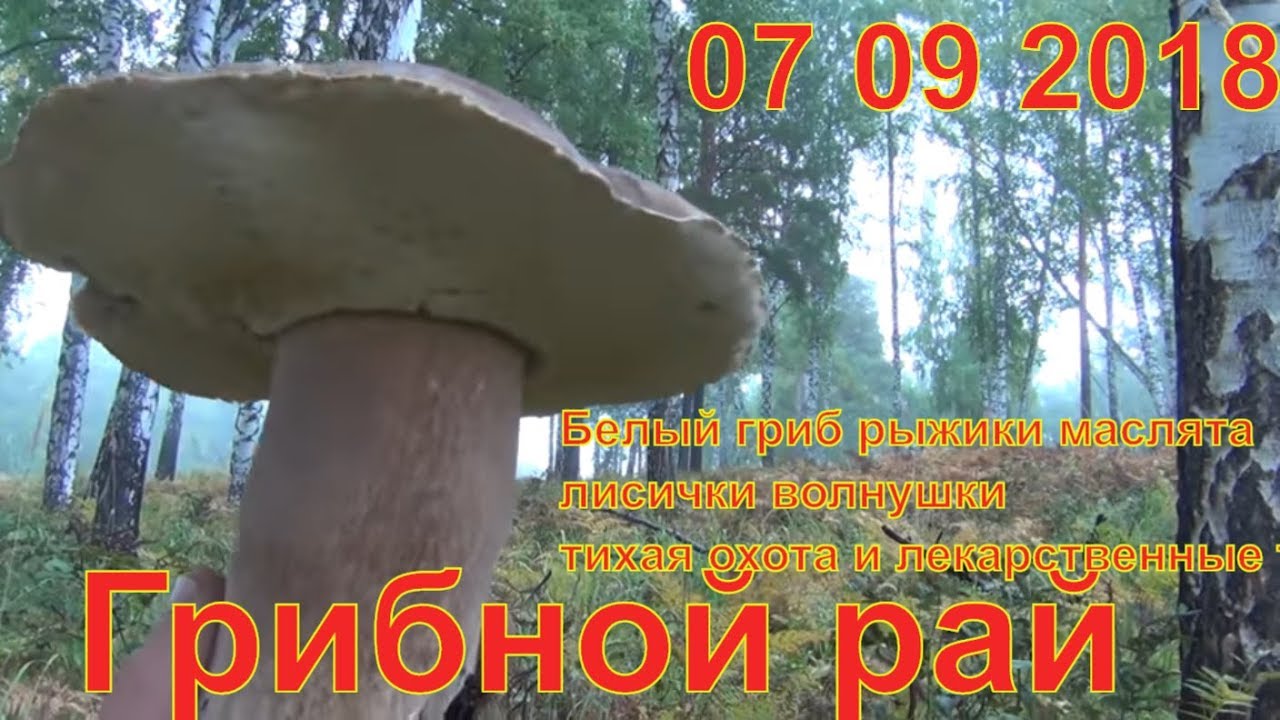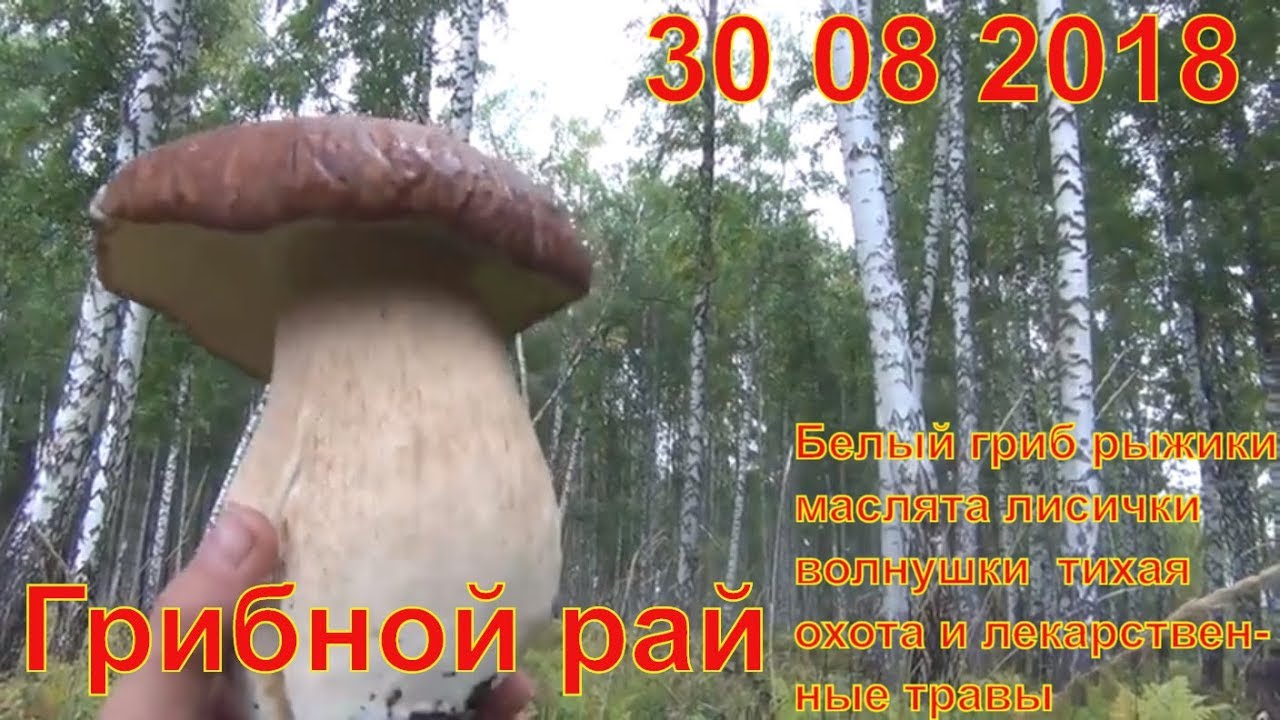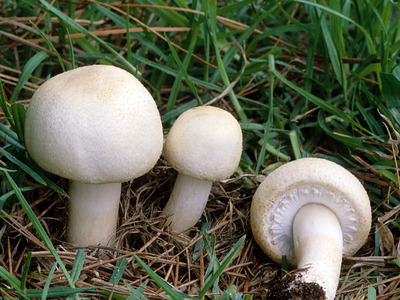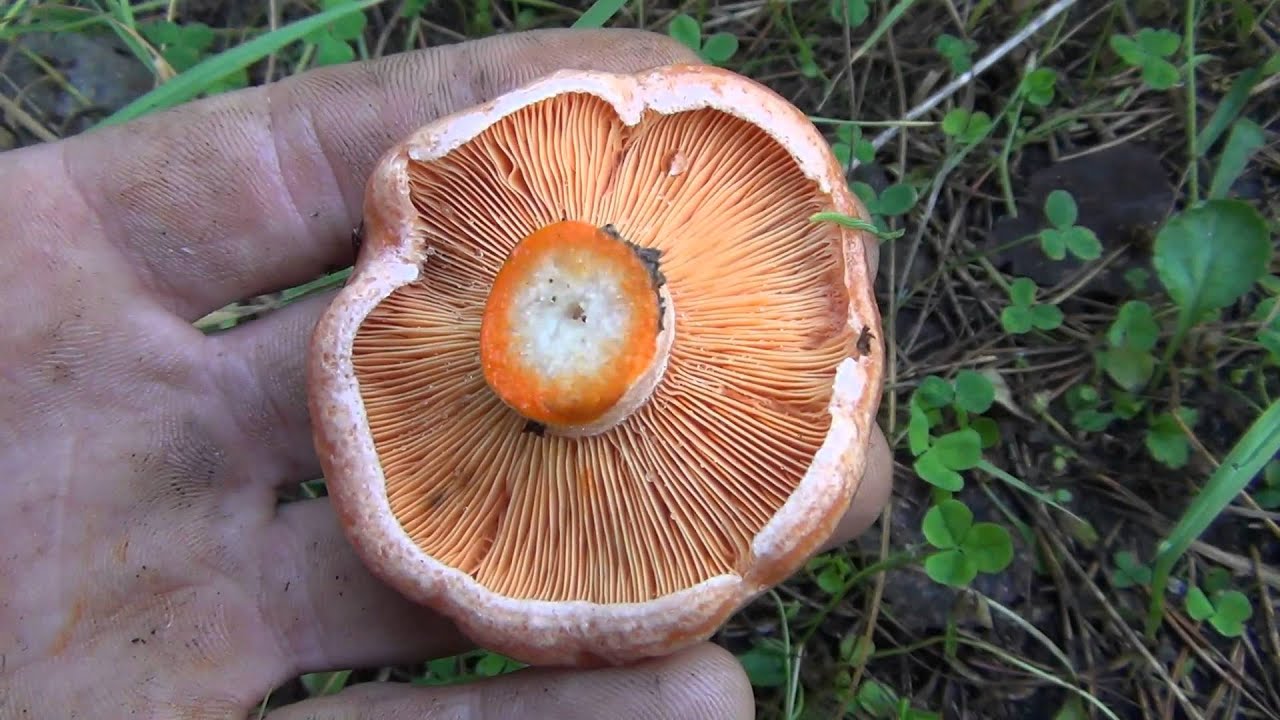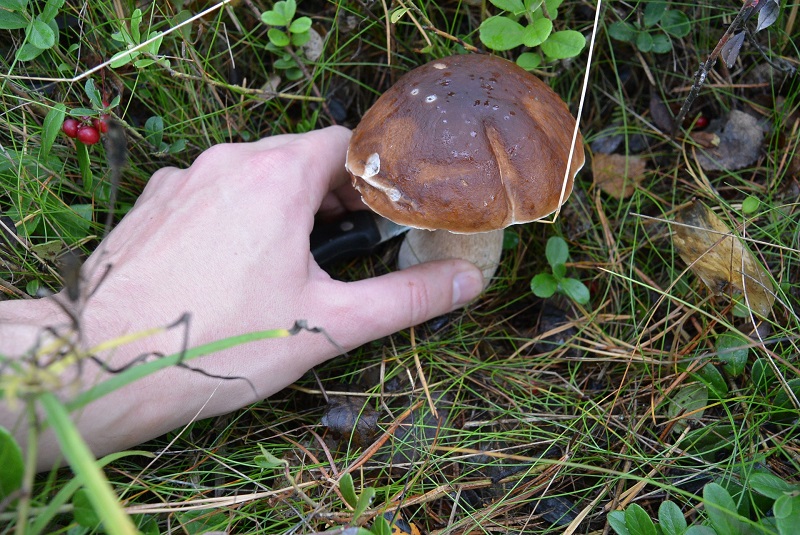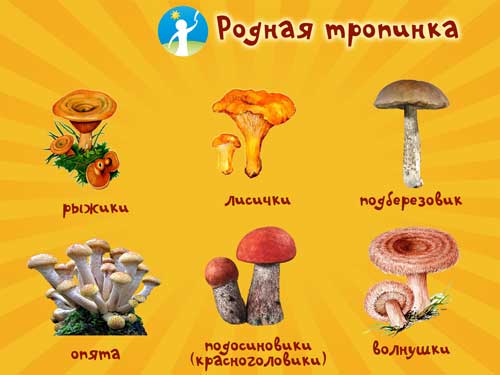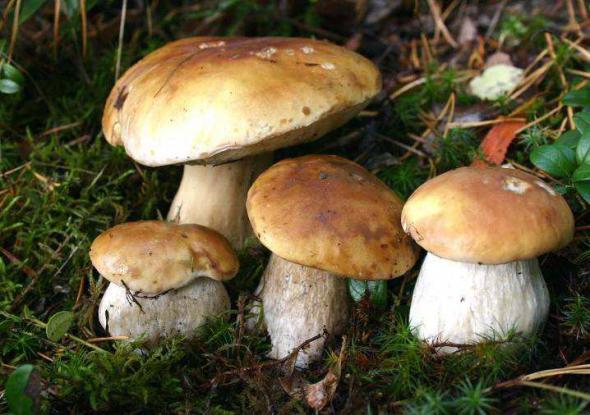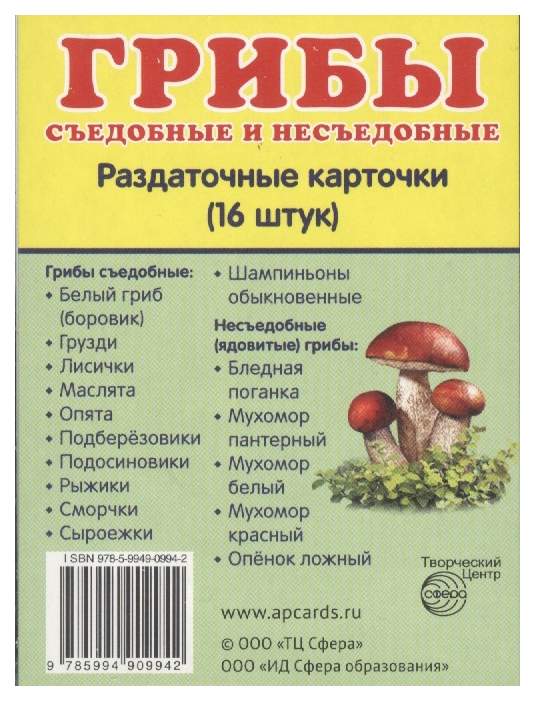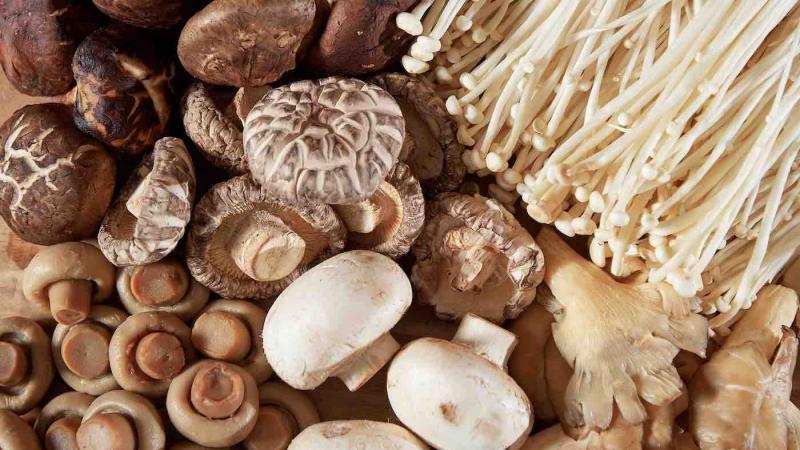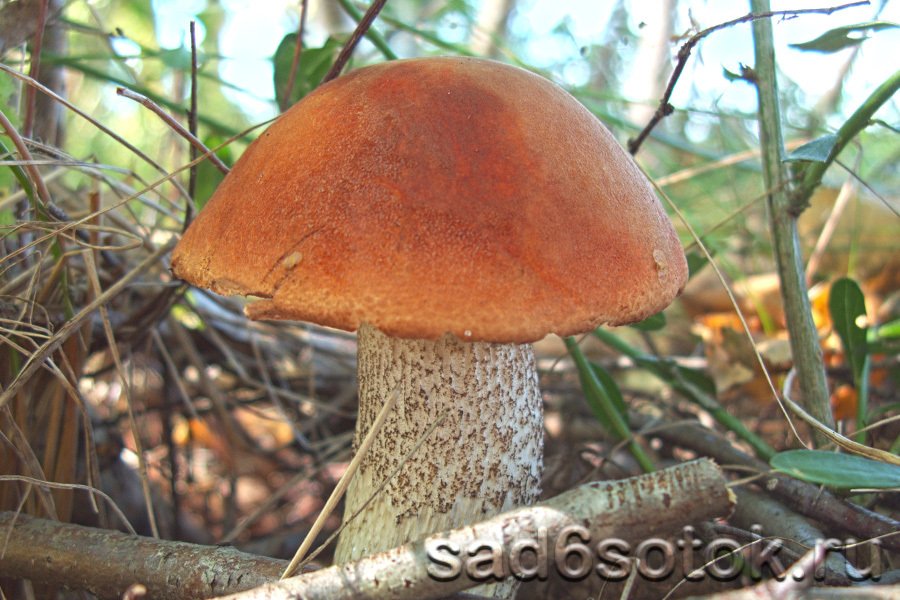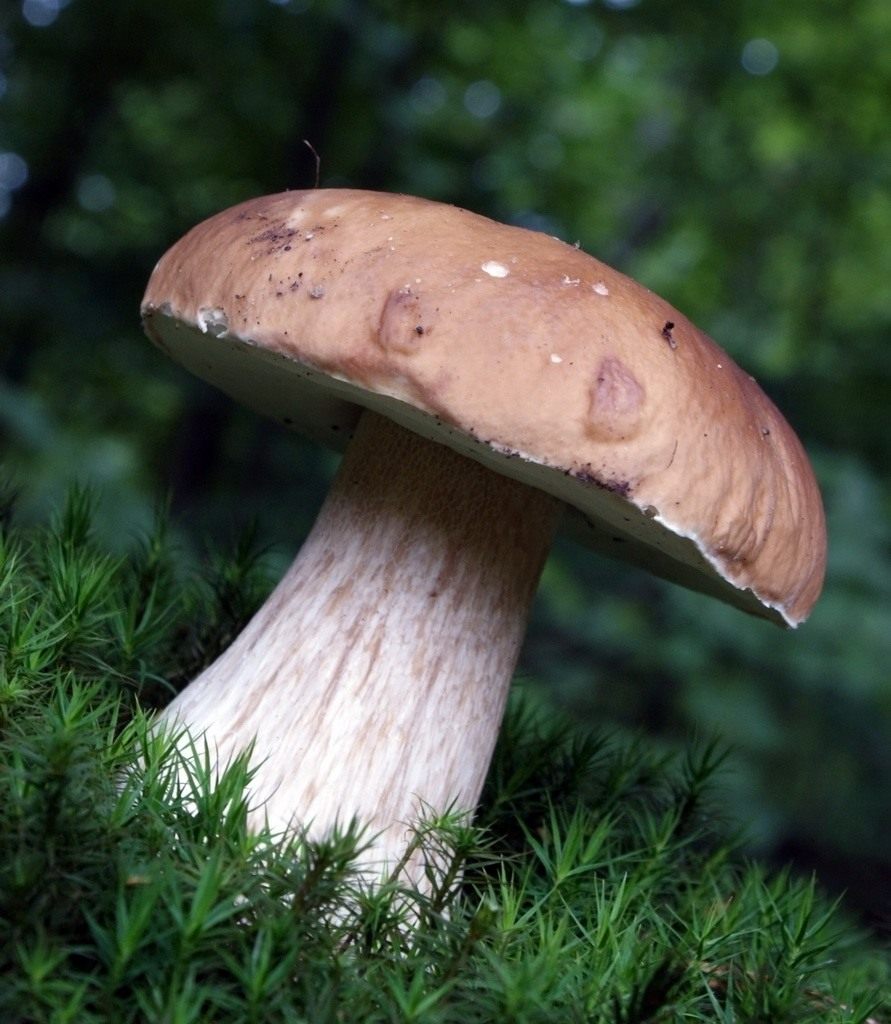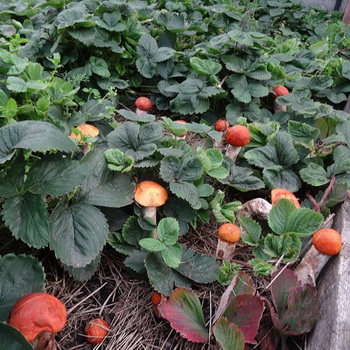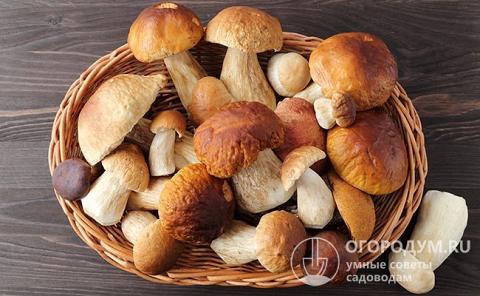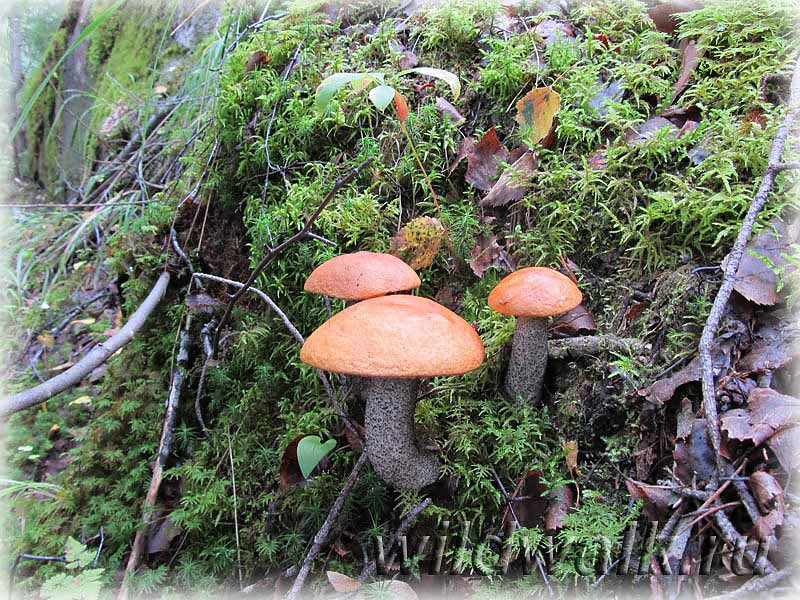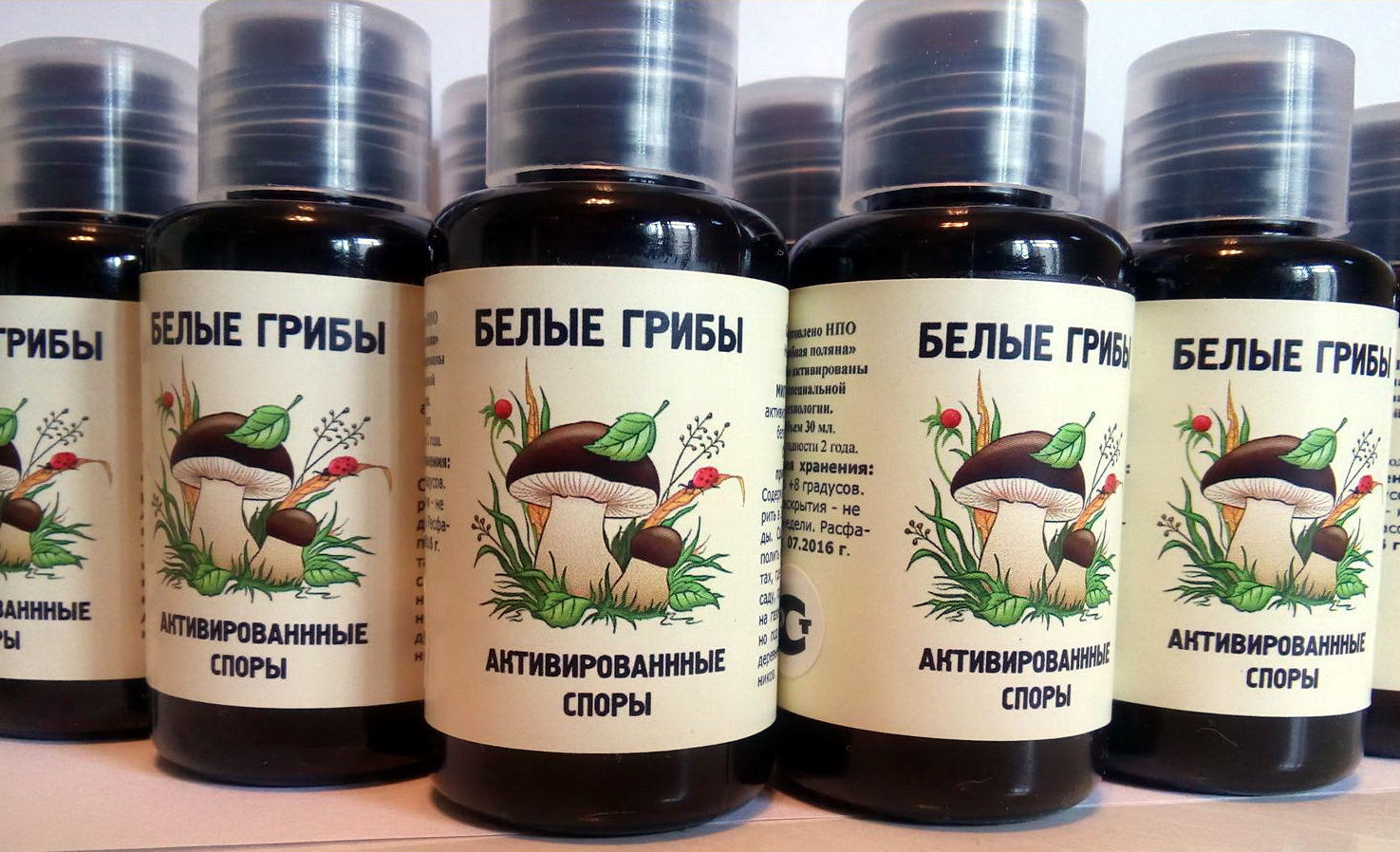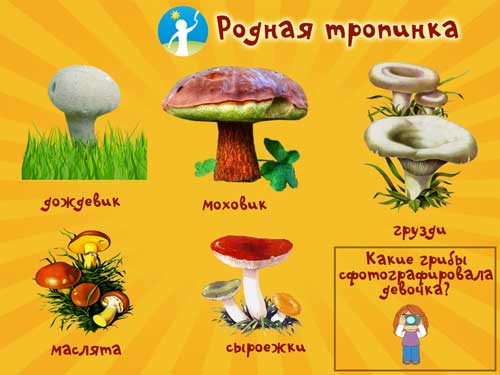Growing
At home, milk mushrooms can be grown in two ways:
- first option
attractive for its cheapness. Spores from matured mushrooms are collected on their own. Then mycelium is grown from them. The problem is that it is almost impossible to predict the process of seed development. This method can only be used by experienced mushroom growers;
- the second way
more expensive, but more reliable. Ready-made mycelium is bought in a specialty store and put into the substrate.
Growing milk mushrooms consists of several important stages:
Site preparation
The site chosen for planting must be well fertilized with peat. Young deciduous trees must grow on the site. They should not be more than four years old. You can use birch, poplar, willow and other hardwoods. The soil is disinfected with a lime solution;
Sowing
The best time to lay mycelium outdoors is between May and September. If you have a heated greenhouse, you can plant seeds at any time of the year;
Mycelium preparation
For sowing mushrooms, you need to prepare the substrate. For him, sterilized sawdust of deciduous trees is mixed with disinfected soil. To them are added forest moss from those places where milk mushrooms, fallen leaves, straw and hulls of sunflower seeds grow;
Sowing
If you plan to grow mushrooms outdoors, you need to prepare the mycelium wells. They are dug up close to the root system of the patron trees and half filled with the substrate. The mycelium is placed on top. And again the substrate to the edge of the hole. Then the soil must be tamped and covered with pieces of moss and leaves.
For growing indoors, the mycelium of the mushrooms is planted in a plastic bag filled with a substrate. Small cuts are made in the bag in a checkerboard pattern;
Care
To obtain a high yield, it is necessary to constantly water the mycelium and the trees under which it is located. In dry weather, at least 30 liters of water per week should be poured under each tree. Measures must be taken to protect the plantation from direct sun exposure. For the winter period, the mycelium should be covered with foliage and moss. Mycelium bags must be kept under specific conditions. Before the formation of fruiting bodies, the temperature should be maintained within 18 - 20 degrees. When mushroom sprouts appear, it must be reduced to 15 ° C, ensure the optimal level of lighting and humidity;
Harvest
Within a week after the formation of fruiting bodies, the milk mushrooms are gaining their usual weight. You can start harvesting in July and pick mushrooms until the end of August. They need to be carefully twisted out of the mycelium or cut with a knife at the root. A properly planted mycelium, with proper care, bears fruit for about five years.
Despite the peculiarities of taste and subtleties of preparation, the milk mushroom has been revered in Russia since ancient times. Having prepared it according to all the rules, you will get an excellent appetizer, a side dish, and aromatic pastries. This mushroom is worthy of being in your kitchen.
When does mushroom picking start
The Moscow region covers an area of almost 45 thousand km², a significant part of which is forest plantations (up to 40%). Late spring and the beginning of the calendar summer are the time when it is time to gather for a "quiet hunt". The most mushrooming places on the map of the Moscow region in 2020 are Ruzsky, Kolomensky and Stupinsky districts, where you can collect more than one basket of noble whites or popular honey agarics.
| Name of mushrooms | May | June | July | August | Favorite places of mushrooms |
| Morels | 1-10 | Mass growth | No | No | Light deciduous forests - birch forests, aspen forests, oak forests, spruce forests, burnt areas |
| Butterlets | 20-31 | 1-10 | Mass growth | Mass growth | Pine forests, edges and glades of mixed coniferous-deciduous forests |
| Chanterelles | No | 10-20 | Mass growth | Mass growth | Mixed coniferous-deciduous forests, near pine, birch, oak. "Friends" in leaf litter, moss, dense grass |
| White mushroom | No | First decade | Mass growth | Mass growth | Well-warmed forests, with no dense thickets |
| Boletus | No | First decade | Mass growth | Mass growth | Mixed forests with an admixture of birch |
| Boletus | No | First decade | Mass growth | Mass growth | Close to any deciduous trees |
| Mosswheel | No | Last decade | Mass growth | Mass growth | Lowlands, moss cushions in coniferous and mixed forests |
| Summer mushroom | No | 1-10 | Mass growth | Mass growth | Deciduous trees |
| Autumn honey | No | No | No | 20-31 | Grows ubiquitous on both living and decaying mixed forest trees |
| Ryzhik | No | No | 20-31 | Mass growth | Ephedra, especially young plantations |
| Real milk | No | No | 01-10 | Mass growth | Mixed forest, with a predominance of birch plantations |
| Volnushka (white, pink) | No | No | 01-10 | Mass growth | Old mixed forests, deciduous area where birches are found |
Mushroom picker calendar (main types of mushrooms)
| Reproduction | Weak (-) | Mass (+) | |||||||
| View | April | May | June | July | August | September | October | November | December |
| White | + | — | + | — | + | + | + | — | |
| Aspen boletus | — | + | + | + | + | + | |||
| Boletus | — | + | + | + | + | + | |||
| Butterlets | — | — | + | + | + | — | |||
| Flywheels | — | + | + | + | — | ||||
| Chanterelles | — | + | — | + | — | ||||
| Champignon | — | + | + | + | — | ||||
| Honey mushrooms | — | — | + | + | + | + |
Young mushrooms are best harvested on the third day after a summer rain. A lot of precipitation in July predicts a real mushroom invasion until autumn.
The use of mushrooms in medicine
Beneficial features
the weight of the present make it possible to use it for stomach problems. It is necessary to collect young mushrooms and boil them without salt. Milky juice from the milk helps to cure acute purulent inflammation of the eyes (blenorrhea).
An extract with antitumor effect is obtained from the peppermint. The methanol extract, isolated from fresh mushrooms, has antibacterial and antifungal effects. These properties of the mushroom make it possible to use it for the treatment of tuberculosis, diabetes mellitus, pulmonary emphysema. Only young individuals are suitable for obtaining the drug. The antioxidant activity of these mushrooms is also high. In Chinese medicine, weights are used to relax muscles and relieve muscle cramps. In Russia, healers used it to remove warts and remove stones from the kidneys and gallbladder.
Be very careful when eating these mushrooms! Before pickling and salting, they must be boiled well. The resulting mushroom broth cannot be used. Thoroughly clean and rinse the milk mushrooms before canning. If this is not done, then anaerobes are formed and intensively developed in hermetically sealed cans. Once in the human body, they provoke botulism. This is a dangerous disease that often leads to death.
Varieties of mushrooms
Real lump
Real milk mushroom (wet, white, raw).
An edible mushroom belonging to the first category. You can meet him in Siberia or the Urals. Grows in young birch groves or plantings. Fruiting from July to October. A large species with a cap diameter of 20 cm. It is flat in shape, with age it becomes funnel-shaped with a curved edge, covered with mucous, wet skin of a cream or yellow color. Because of this, the real milk is sometimes called raw. Concentric watery zones are visible on the surface of the cap.
The leg is from three to seven centimeters in height and up to five in diameter, smooth, yellowish, hollow, cylindrical in shape.
Brittle, firm pulp white has characteristic fruity smell. It contains a white, acrid juice.
The plates of this mushroom slightly descend on the stem, frequent, wide.
Black milk
Black milk (black, gypsy).
Conditionally edible mushroom belonging to the second category. It grows in places where there is access to sunlight, in mixed forests with a predominance of birches.
The cap grows to 18–20 cm. The shape, like the rest of the mushrooms, is funnel-shaped with tucked edges. The cap color ranges from olive to brown. The color is darker in the center than at the edges.
The pulp, although dense, but easily breaks, at the break it acquires a grayish tint. Inside, a milky juice with a pungent aftertaste is released. The plates descend on the mushroom leg, thin, frequent.
The leg is long, about 8 cm and thick - about 3 cm in girth. By color she matches the hat, smooth to the touch, with a sticky coating. In old mushrooms, the leg is loose, hollow.
Pepper milk
Peppermilk (peppermint).
This species is widespread in the temperate and forest-steppe zone of Russia. It grows near oaks, spruces and birches in deciduous and mixed forests. The fruits are harvested from July to October.
A young mushroom has a white cap, turns yellow with age, brown spots appear on it. It is flat in shape; over time, a depression appears on it. Outwardly fleshy, dense, matte. Dry to the touch.
The pulp of the pepper milk is dense, coarse with a pungent taste of pepper and the smell of rye bread, in its normal state it is white, at the break it acquires a light blue color. Gives off a lot of milky juice with a burning taste.
Smooth, dense, white leg grows up to 8 cm in height and 1.5–2.5 cm in width. The plates are cream-colored, frequent and narrow.
Blue breast
Blue lactus (canine, golden yellow).
Distributed throughout the Arctic and temperate zone of Russia, in places with a damp climate. Mycorrhiza most often forms with the roots of birch, willow and spruce. The highest yields are observed from mid-July to early October.
This one mushroom cap 7-20 cm, thick, fleshy, flat with a depression in the middle. The color is usually light yellow with a subtle concentric pattern. The surface is covered with hairs, the edge is pubescent. In rainy weather, a mucous layer appears on the cap, in places of pressure it changes color to purple. The same color is acquired by the milky juice that stands out from the white, dense, bitter pulp. Narrow, frequent plates, when pressed, become covered with dark spots.
Common sizes of the leg are 10 cm x 3 cm. The color is usually yellow, with dark spots. In structure, it is loose, blue from the touch.
Calendar of the appearance of mushrooms by month
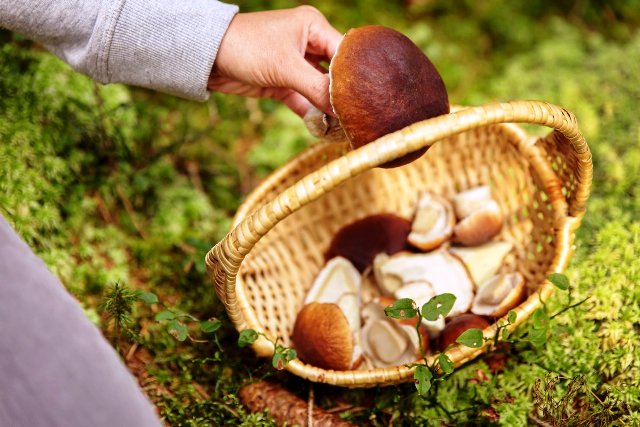
Experienced mushroom pickers know that mushrooms in the forests can be collected almost all year round, even in the winter months, provided that the winter is warm, in the forests you can find mushrooms such as oyster mushrooms. Well, from April the real season of mushroom hunting begins. At this time, the first morels and lines appear, the mushrooms are inconspicuous, but very tasty. At the end of May, the first, so far few, boletus trees appear in the forests, but since the second half of June, real mushroom expanse begins! It lasts until October - November, and at this time only the lazy does not go into the forest to pick up such delicious and beloved by many mushrooms.
Let's get acquainted with the calendar of the appearance of mushrooms in our forests:
- January: practically no mushrooms, oyster mushrooms may appear, along the south of truffles.
- February: no mushrooms, except for oyster mushrooms.
- March: oyster mushrooms are still being harvested.
- April: Morels and stitches appear.
- May: morels, boletus, boletus, russula appear.
- June: porcini mushrooms, boletus, boletus, boletus, chanterelles, champignons, russula.
- July: porcini mushrooms, boletus, boletus, boletus, chanterelles, champignons, russula, milk mushrooms, honey mushrooms.
- August: porcini mushrooms, boletus, boletus, boletus, chanterelles, champignons, russula, milk mushrooms, mushrooms, honey mushrooms.
- September: porcini mushrooms, boletus, boletus, boletus, chanterelles, champignons, russula, milk mushrooms, mushrooms, honey mushrooms.
- October: porcini mushrooms, boletus mushrooms, aspen mushrooms, mushrooms, russula, honey mushrooms, milk mushrooms.
- November: mushrooms, oyster mushrooms, truffles.
- December: oyster mushrooms, truffles.



The main types of saffron milk caps
Pine mushroom (upland) (Lactarius deliciosus)
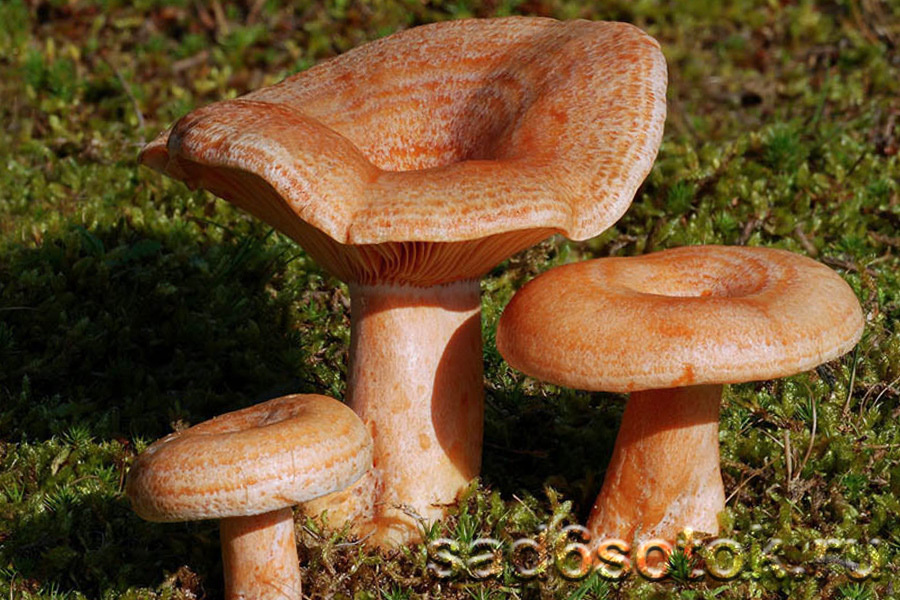
Pine mushroom (upland) (Lactarius deliciosus)
It grows in pine forests and mixed forests, comes across more often than others, favorably with the reddish-red color of the fruit bodies and the strong, stocky appearance of the mushrooms. The orange-yellow cap is round, 5–18 cm in diameter, with dark concentric zones, at first convex, with time the edges rise, forming a wide funnel. The hat is slippery to the touch, sticky in rainy weather. The plates are frequent, narrow, yellowish. Hollow leg height up to 9 cm.
On the fracture of the pulp, an orange milky sweetish juice with a pungent taste and a resinous smell appears, which quickly turns green in the air. When removed, the mushroom takes on a slightly greenish tint, especially in places where it is touched.
The pulp is dense and salted, these mushrooms look very attractive.
Spruce mushroom (spruce) (Lactarius deterrimus)

Spruce mushroom (Lactarius deterrimus)
Spruce mushrooms form mycorrhiza with the roots of spruce trees and grow only near these trees. The color of the cap is light orange, with darker rings and spots, over time it acquires a dark green, coniferous shade. Under the sun, the skin tends to fade and become whitish. The leg is thin, 3–7 cm high, brittle, the cap is fragile, especially at the edges, which is why the spruce trees often wrinkle and break in baskets.
The milky reddish juice is released in large quantities, it tastes good, turns green in the air. Salted spruce trees are very tasty and fragrant, but acquire a dark, greenish-brown hue.
Red mushroom (Lactarius sanguifluus)

Red mushroom (Lactarius sanguifluus)
The species is common in pine and spruce forests, characterized by a dense reddish-pink or orange hat, up to 10 cm in diameter with bent edges and a depression in the center, without a sticky coating. The pulp is light, with a pinkish tinge and burgundy spots. The milky juice of a deep red color, darkens over time, acquiring a red-brown color.
The leg is strong, up to 6 cm high, tapering at the base, covered with a characteristic mealy bloom and small crimson pits all over the surface. The color of the leg varies from yellow-orange to purple. The species is edible, suitable for pickling and preparing a variety of mushroom dishes.
Milky red mushroom (Lactarius semisanguifluus)

Milky red mushroom (Lactarius semisanguifluus)
This beautiful bright mushroom is found near the pine trees. The hat is fleshy, up to 9 cm in diameter, flat, with a slightly depressed center and curved edges. The skin is light orange, along the edges of a pink hue, over time, a greenish tone appears at the center. The plates are frequent, narrow, orange in color with a characteristic pink sheen; in an aging mushroom, they become reddish.
The milky juice is first orange, then reddening and greening. The taste is pleasant, soft. Hollow stem up to 7 cm high, narrow, fragile. The pulp is brittle, orange, becomes greenish when broken.
Winter honey
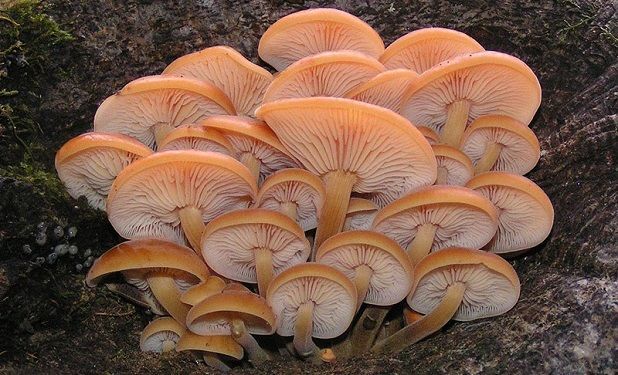
A fairly common mushroom in natural conditions, which is also cultivated.
- you need to prepare a substrate, you will need: wood, both coniferous and deciduous, sawdust and shavings, bran are suitable; organic additives, ash, bone meal. Organic additives must be 30%, the rest is wood shavings (sawdust). The components are poured with water while stirring. It is necessary to achieve a substrate moisture content of about 60%;
- the resulting mixture is half-filled with ordinary glass jars (usually liter), closed with lids and sterilized by steam for 5 hours; a day later, repeat the sterilization;
- a thin layer of mycelium (2-4 mm) is applied to the substrate with a sterile instrument, such an operation must be carried out quickly, so as not to bring anything into the sterile environment, quickly close the lid;
- so that the mycelium grows well indoors you need to maintain a temperature of 20-25 ° C
; - when the mycelium has grown to 90% of the total substrate, the lids can be removed; move the cans to a dark room, where the temperature will not be higher than 14 ° C, the humidity is about 85%;
- after 2 weeks, the rudiments of fruiting bodies should appear, the temperature will now need to be maintained at 9-12 ° C, the humidity is still 80-85%, artificial lighting (50 lux), good ventilation will be needed;
- to keep the mushrooms in an upright position (they have thin and long legs), "funnels" are made of thick paper around the neck of the jar.
Typically, the yield from one "sowing" includes two or three waves. After that, the jars are released and washed, then the process is repeated again.
Thus, you can grow various mushrooms, which you like best. Each technology has its own peculiarities and difficulties, however, your efforts will be rewarded with a good and environmentally friendly harvest of delicious mushrooms.
And a little about secrets ...
Have you ever experienced unbearable joint pain? And you know firsthand what it is:
- inability to move easily and comfortably;
- discomfort when going up and down stairs;
- unpleasant crunching, clicking not on their own;
- pain during or after exercise;
- joint inflammation and swelling;
- unreasonable and sometimes unbearable aching pain in the joints ...
Now answer the question: does this suit you? How can you endure such pain? And how much money have you already "poured" on ineffective treatment? That's right - it's time to end it! Do you agree? That is why we decided to publish an exclusive interview with Professor Dikul
, in which he revealed the secrets of getting rid of joint pain, arthritis and arthrosis.
Mushrooms of Transbaikalia 2020, photo name
Novice mushroom pickers should know the names and descriptions of mushrooms popular in Transbaikalia. Therefore, the main types, a summary and a photo of each mushroom are presented below in the article.


Boletus and boletus
The main fruits of the mixed forests of Transbaikalia in 2020 were mushrooms with the proud name "Boletus" and "Boletus". Buttons are a combination of a thick, slightly fleshy leg and a large cap, which have an appetizing color and noble appearance. A distinctive feature of these two types is the hat. In boletus boletuses, it has a rich yellow and dark brown color, and in boletus boletuses it is lighter, close to the shade of autumn foliage. To understand the difference, just look at a clear photo taken a year earlier.
Another distinctive feature is the marks that appear when pressing on the sponge under the cap. Green and brownish spots are characteristic only of boletus boletus.
You can collect stubs from mid-June to early October in a birch or aspen forest belt. Young mushrooms rarely become wormy.
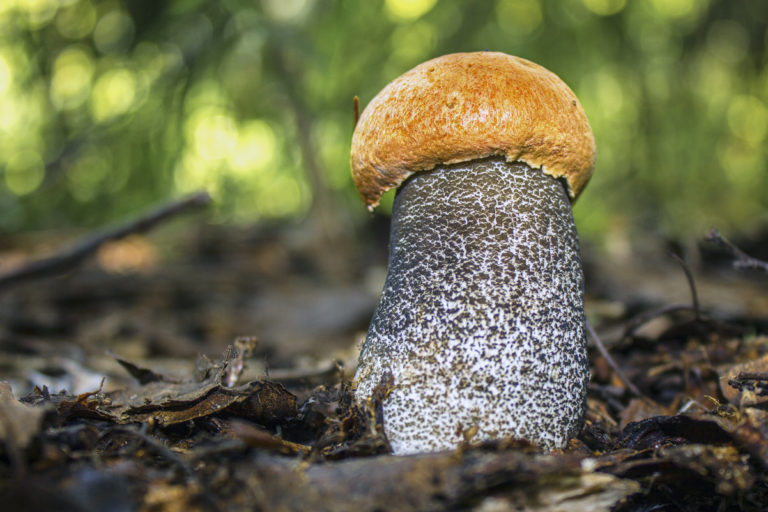

White mushrooms
The most delicious in Transbaikalia of Russia are porcini mushrooms or, as they are also called, boletus mushrooms. They grow throughout the territory of mixed forests, mainly in thickets or places of germination of ferns.
Growth time is from August to October.
Description: the size of the porcini mushroom can reach 25-25 cm. The hat can be not only white, but also light cream, milky and brown. The leg is usually white. May have blotches of light beige.
Cooking mushrooms is not limited to cooking in a pan or oven. Boletus fruits can be dried, pickled and canned.

Butterlets
The photo below shows snotty boletus that prefer moist coniferous soil and tall grass. They grow in whole families near pines and fir trees. Most of the mushrooms grow in young needles and a narrow forest belt, letting the sun's rays through the needles.
A distinctive feature of the oiler is the oily cap. It is covered with a thin film, which is removed with a knife blade when processing mushrooms before cooking.

Chanterelles
Mushroom places of Transbaikalia 2020 offer not only tasty, but also very expensive mushrooms, appreciated in many European countries. We are talking about chanterelles, or as they are called in the people - "red cockerels".
You can store chanterelles frozen in the refrigerator. They perfectly retain their taste and aroma in the freezer.
On the territory of Transbaikalia, you can find only two varieties of chanterelles: ordinary and orange talkers. And if the former are included in the category of "edible" mushrooms, the latter are inedible. It is forbidden to eat them in any form. They can cause severe poisoning, vomiting, diarrhea and even intoxication of the body. You can distinguish between two seemingly similar mushrooms by the following features: the shape of the leg, shade and smell. The edible type has a thin and graceful leg, rich orange color and pleasant aroma. But the talker has a specific smell that is difficult to confuse with any other.
White and raw milk
Lovers of mushrooms will like the fact that mushrooms grow near Lake Baikal. And not only black and white, but also the most valuable fruits - raw varieties. Delicious specimens are distinguished by a lace pattern on the mushroom head and a funnel-shaped notch in the middle of the hat.
Milk mushrooms germinate in both mixed and coniferous types of forests. The photo below shows that they often grow in impenetrable tall grass. Therefore, in order to collect a basket of delicious mushrooms, it is enough to take a good look at the bushes sprouting in the forest. True, one should be careful. Snakes can be found in tall grass.
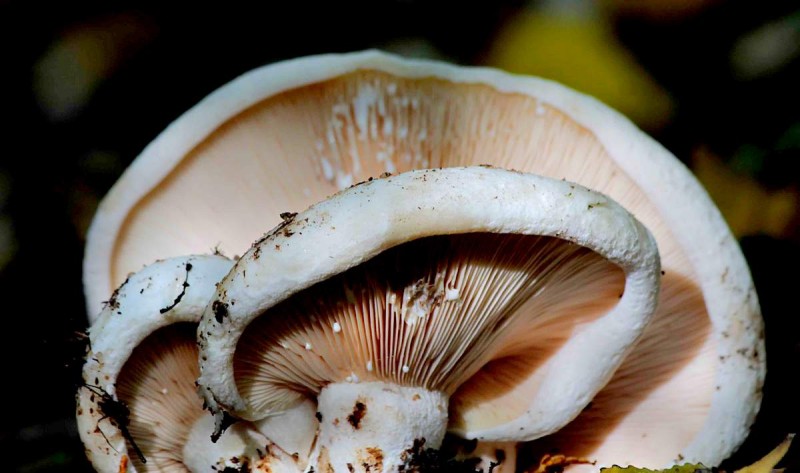
Volnushki
Conditionally edible mushrooms are also found in the area and wavelets are one of them. The most popular are pink and white varieties, whose cap reaches a diameter of 15 cm. At a young age, the cap is convex and does not differ in any way from its edible counterparts, and only in a mature state does a fossa appear in the little waves. The leg is large, white or light pink.
Waves grow next to birches in mixed forests. The harvest occurs at the end of June and lasts until the beginning of October.

Ryzhiki and honey agarics
In 2020, Transbaikalia delighted its residents with delicious mushrooms and honey agaric families. Since August, mixed forests have been dotted with small mushrooms, and coniferous zones - with mushrooms. Which of the two options to collect in your basket is up to our readers only.
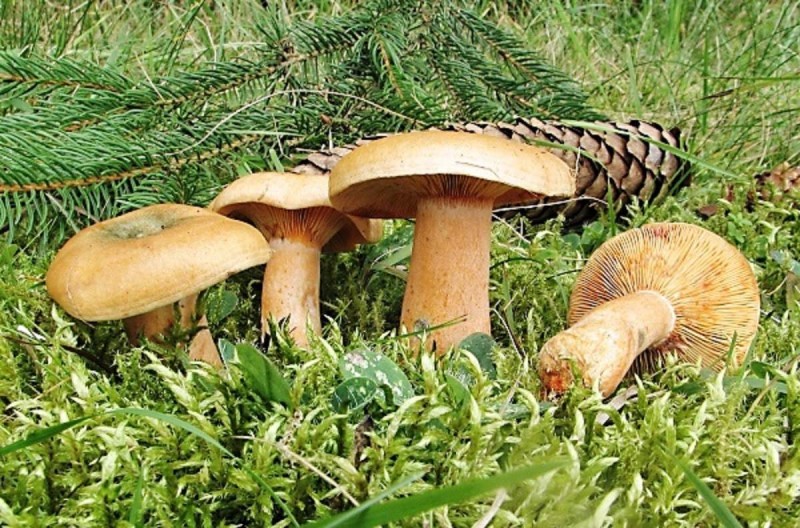
Mushroom picking tips

Experienced mushroom pickers recommend following a few tips to make the "quiet hunt" as enjoyable as possible:
- it is necessary to choose the most mushroom places on the map at a distance of at least 50 k from Moscow - this eliminates the possibility of poisoning even with edible mushrooms that have accumulated heavy metals in themselves:
- for the same reason, you cannot pick mushrooms along busy highways;
- mushrooms do not like loneliness - most often they grow in groups, so you should not rush, but it is better to carefully examine the neighboring places;
- it is better to go hunting in the early morning - as long as there are no piercing rays of the sun, it is much easier to search and collect mushrooms in the forest;
- you can’t rely “at random” and pick up unfamiliar mushrooms. All poisonous and inedible species must be well studied from the description and photographs. At the slightest doubt, it is better to leave the mushroom in the forest;
- Before the hike, you need to prepare comfortable clothes and shoes. Even in hot weather, it is not recommended to go into the forest with bare arms and legs and without a hat - there is a high probability of a tick bite.
The Moscow region is a real paradise for admirers of "quiet hunting". In July and August, mushrooms grow so quickly that amateurs collect baskets of young, fragrant and tasty mushrooms, despite the huge competition. If you choose the right route and follow all safety rules, then until next year you can enjoy the gifts of the Moscow forests.
Useful articles from the "Calendars" section:
Useful articles for the gardener:
- When to remove pumpkin from the garden for storage: timing
- Auspicious days for sowing in January 2020: what to sow
- Planting a delphinium in 2020: auspicious days, cultivation and care
- Peach: planting, care, pruning, protection from diseases and pests, prevention
- Parsley
- Planting strawberries in autumn in 2020: when to plant, timing
- Planting a lawn in the fall: when to sow, timing
- Storing onions at home: how to do it right, methods, conditions
- How to fertilize the soil in the fall after harvesting: what fertilizers to apply
- Planting siderates in the fall before winter: what siderates to sow
Comparison
There are several signs that make up the difference between a mushroom and a chanterelle. First of all, mushrooms are not quite similar in appearance. The adult chanterelle has a funnel-shaped cap with a strong depression and very wavy edges. The cap of the saffron milk cap is also concave, but not so much, and its edges are much smoother.
In the saffron milk cap, the plates and the leg are clearly demarcated; in the chanterelle, the plates smoothly pass into the leg, and in the place of this transition the mushroom has no sharp outlines. And comparing the color of the mushrooms, you can see that the chanterelle often looks noticeably lighter than the saffron milk cap. In addition, she never has greenish spots and rings on the cap, which is typical for saffron milk cap.
The mushroom is smooth to the touch, and the chanterelle is velvety. In addition, trying to determine what is the difference between camelina and chanterelle, you can separate part of the pulp of both mushrooms. In the saffron milk cap it will be brittle, while in the chanterelle it will be soft and fleshy. At the same time, orange drops (milky juice) will appear at the place of the break at the saffron milk cap, which will soon turn green. Nothing of the kind will happen to a chanterelle.
In addition to everything, the main advantage of the chanterelle should be mentioned - it is completely unattractive to worms (the only exception is the wireworm, but it is also extremely rare in the pulp of the mushroom). Gingerbreads, like most other mushrooms, can come across wormy.
Top 10 most useful mushrooms
porcini mushroom

